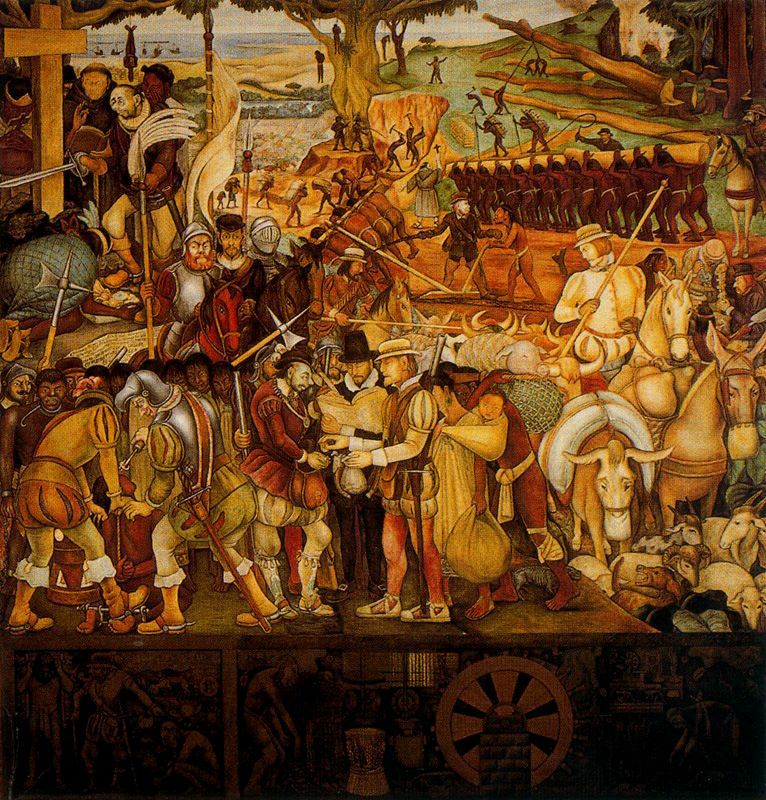Uncomfortable Topics—How Cruel Were the Spaniards? (Reposted)
Revisiting History—By Iris H. W. Engstrand
(First published on Feb 19, 2010)
Beware of “settled” truth about any topic. Established truths are usually contaminated by the favored views of powerful parties, in this case the longstanding animosity of the English toward the Spanish in the 16th century and thereafter.
From first contact in the Caribbean, Spaniards uprooted natives from their homelands, forced them to give up their treasures, and placed them in captivity. Spaniards who were victims of conquest by Muslims over much of their history, and common sailors who were struggling to find some kind of wealth after weeks of deprivation on board ship were not disposed to act kindly. Countless Indians died during the first years of contact, although mainly from disease. Other Spaniards in the Caribbean, like the Dominican priest Antonio de Montesinos, spoke out against mistreatment of Indians as early as 1511 (5).
Were the Spanish conquistadores of the sixteenth century cruel? Of course. How would it be possible to conquer other peoples without acts of cruelty? But cruelty of one nation toward another, or one group of people toward another, must be evaluated in terms of time and place. One could ask, “Were the Indians of the sixteenth century cruel?” Of course. Some engaged in human sacrifice, slavery, infanticide, and other forms of human behavior that we regard today as “cruel.” We could also ask about cruelty in modern times–the bombing of cities, the destruction caused by nuclear attacks, torture of political prisoners, and random shootings of innocent victims. A study of areas conquered by other Europeans, or methods of punishment throughout Europe from the sixteenth through the eighteenth centuries can also be helpful in understanding degrees of cruelty…
The mission system remains a controversial topic among California historians. Some stress that Indians benefitted if they learned to live in settled communities, cultivate the soil, tend cattle and sheep, ride horses, weave cloth, and adapt to European ways. Others emphasize that native groups who had previously enjoyed independence were forcibly reduced to subject peoples, rigidly controlled by a foreign nation, and decimated by European diseases (18). For their part, the Franciscans believed that Indians had to be separated from their aboriginal culture or they would not learn the ways of Christians. Missionaries used both rewards and punishments. Certainly individual friars were sometimes guilty of excesses in forms of punishment, but their motives were to improve the lives of their charges and give their souls salvation. In several ways, they subjected Indians to the same forms of discipline as they meted out to Spanish students in Franciscan schools (19). With hindsight it might be said that Indians, who in the long run proved powerless to resist European encroachment upon their lands throughout the New World, may have been better off under Spanish missionaries than they would have been under civilians or the military forces of other conquering nations (20).
We cannot go back and change history to suit present standards, but we can try to understand actions and motives by both players and recorders of past events. We can understand only what we know, and we can know only what we learn. But, most importantly, we can learn only by keeping an open mind and not falling victim to half-truths or prejudices developed over time.
Endnotes
2. Even when the epithet pirate or privateer is given to those who preyed on Spanish shipping, harmful treatment of Spaniards does not seem to constitute cruelty.
5. See Lewis Hanke, The Spanish Struggle for Justice in the Conquest of America (Philadelphia: University of Pennsylvania Press, 1949), 17-18.
6. The expeditions of Francisco Vásquez de Coronado and Hernando de Soto committed unnecessarily cruel acts towards Indians during the early 1540s in their relentless search for gold and other riches. The Pacific explorers under Juan Rodríguez Cabrillo in 1542, on the other hand, attempted to deal with the natives on the basis of friendship.
8. The Jesuits by this time were the most important teaching order in the Americas, and the Franciscans were well known for their hospitals and orphanages.
9. Quoted in David J. Weber, The Spanish Frontier in North America (New Haven: Yale University Press, 1992), 106.
10. Some Indians were effectively enslaved despite royal strictures against the practice.
11. For details of this era, see Donald Cutter and Iris H. W. Engstrand, Quest for Empire: Spanish Settlement in the Southwest (Golden, CO: Fulcrum Publishing, 1996), 73-116.
13. See Charles R. Cutter, The Protector de Indios in Colonial New Mexico, 1659-1821 (Albuquerque: University of New Mexico Press, 1986).
15. Journal of Sebastián Vizcaíno, quoted in Bolton, Spanish Exploration, 80-82.
16. Pedro Fages to José de Gálvez, 26 June 1769, MS GA 487, Huntington Library, San Marino, CA.
17. Antonine Tibesar, ed. and trans., Writings of Junípero Serra, 4 vols. (Washington, DC: American Academy of Franciscan History, 1955-1966), 2:7.
23. See José Mariano Moziño, Noticias de Nutka: An Account of Nootka Sound in 1792, ed. and trans. Iris H. W. Engstrand (Seattle: University of Washington Press, 1991).
24. Donald C. Cutter, California in 1792: A Spanish Naval Visit (Norman: University of Oklahoma Press, 1990), 144.
25. Philip Wayne Powell, Tree of Hate: Propaganda and Prejudices Affecting United States Relations with the Hispanic World (New York: Basic Books, 1971), 25.

